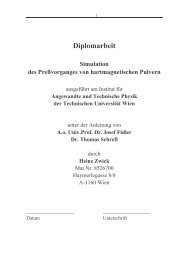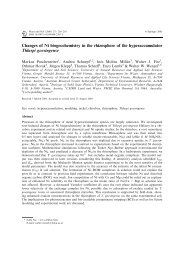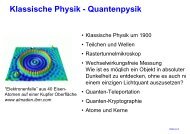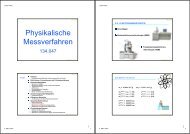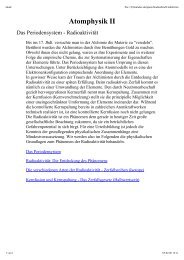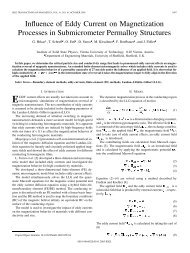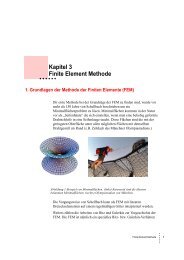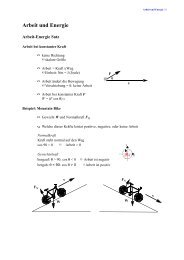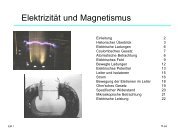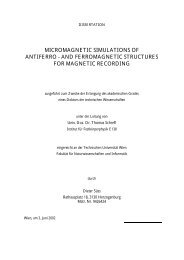Read Back Signals in Magnetic Recording - Research Group Fidler
Read Back Signals in Magnetic Recording - Research Group Fidler
Read Back Signals in Magnetic Recording - Research Group Fidler
Create successful ePaper yourself
Turn your PDF publications into a flip-book with our unique Google optimized e-Paper software.
6.2 Results<br />
FEM Simulations<br />
In the follow<strong>in</strong>g the results of the simulations are presented. Naturally the model described<br />
above of a read head is not perfect at all. It was not the target to design a perfect read head,<br />
but to be able to simulate the read back process. Although the used read head model is not<br />
technically mature, the results of the simulations show qualitative accordance with reality.<br />
6.2.1 Equilibrium State<br />
Ideally the magnetizations of the p<strong>in</strong>ned and the free layer should be perpendicular to each<br />
other <strong>in</strong> equilibrium state, so that the magnetization of the p<strong>in</strong>ned layer shows <strong>in</strong> z-direction,<br />
and that of the free layer <strong>in</strong> y-direction. Then the total resistance would be 32.87 Ω and the<br />
potential difference 98.6 mV. In reality such a perfect configuration is not achievable.<br />
The equilibrium states of our model for the two different current directions are shown <strong>in</strong><br />
Figure 6.4. For the more favorable current direction the magnetizations are almost<br />
perpendicular to each other <strong>in</strong> the center of the GMR element. Unfortunately the free layer<br />
magnetization is twisted downwards due to the demagnetiz<strong>in</strong>g field of the p<strong>in</strong>ned layer.<br />
Similarly the p<strong>in</strong>ned layer is rotated <strong>in</strong> the same direction due to the hard bias. Both effects<br />
lead to an asymmetric transfer curve (see Section 6.2.2).<br />
Figure 6.4: The normalized magnetization of the free layer and the p<strong>in</strong>ned layer <strong>in</strong><br />
equilibrium state for the two different current directions. The color code gives the zcomponent<br />
of the normalized magnetization, red corresponds to the positive and blue to the<br />
negative z-direction. Thus the red arrows represent the p<strong>in</strong>ned layer magnetization. The<br />
right hand side gives the configuration for the more favorable current direction, because<br />
here the current field cancels partially the demagnetiz<strong>in</strong>g field of the p<strong>in</strong>ned layer.<br />
69



